Lanzones Tree
- October 31, 2024
- 0 comment
The Philippine Lanzones Tree, scientifically known as Lansium domesticum, is a remarkable tropical tree cherished for its sweet, nutritious fruits and its environmental contributions.
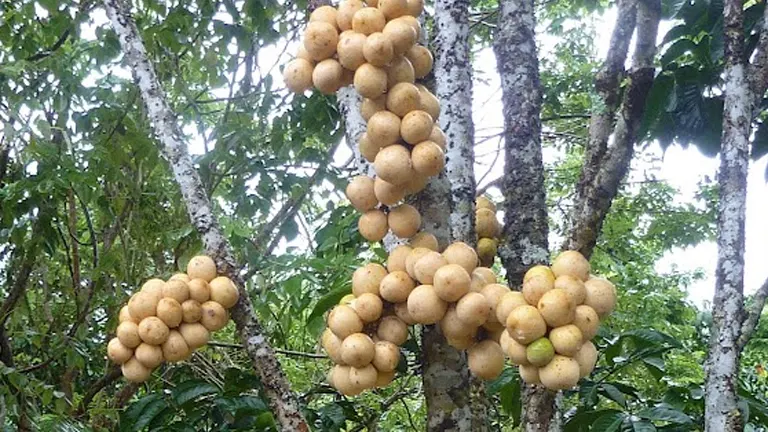
Native to Southeast Asia, this tree plays an essential role in its natural habitat, promoting soil health, providing food and shelter for wildlife, and supporting local economies.
Its presence is significant not only for biodiversity but also for cultural and agricultural reasons across tropical regions.
What Is a Philippine Lanzones Tree?
The Philippine Lanzones Tree, belonging to the Meliaceae family, is a medium-sized tree that can reach heights of 10–30 meters (32–98 feet). The tree has simple, glossy leaves, small greenish-yellow flowers, and rough brown bark.
Known for its clusters of small, round fruits, the Lanzones tree produces fruit with a pale yellow to light brown skin, enclosing a translucent, juicy, sweet pulp. Interestingly, the tree is valued for its ability to improve soil health, and mature trees can live and produce fruit for several decades, with optimal fruiting typically occurring around 10–15 years after planting.
Philippine Lanzones Tree Species
While Lansium domesticum is the primary species, there are various subspecies and varieties found across Southeast Asia, each adapted to specific climates and regions. These varieties include:
Lansium Domesticum Var. Duku
Larger fruits with a thicker skin, popular in Malaysia and Indonesia.
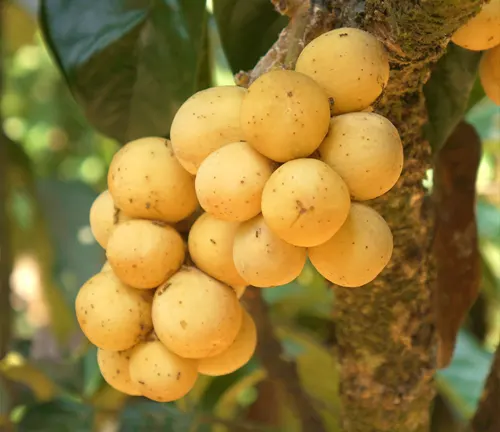
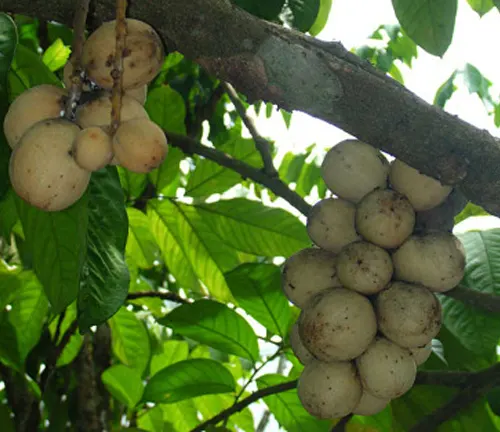
Lansium Domesticum Var. Langsat
The variety most common in the Philippines, known for its sweet, slightly tangy flavor.
Lansium Domesticum Var. Duku-Langsat
A hybrid with the sweet taste of duku and the thin skin of langsat, cultivated widely for its commercial appeal.
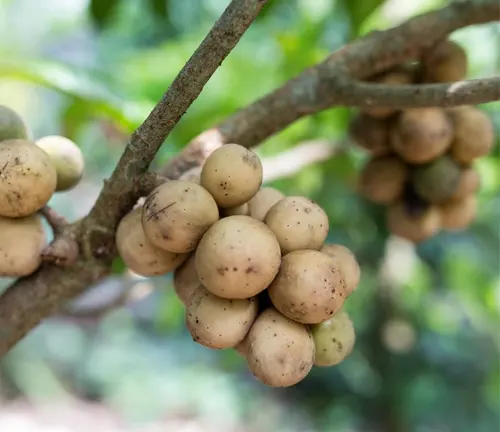
Each variety varies slightly in size, skin thickness, and flavor but serves a similar ecological purpose, providing fruit for local wildlife and contributing to forest stability.
Where Do Philippine Lanzones Trees Grow?
The Philippine Lanzones Tree thrives in tropical regions with warm temperatures, high humidity, and well-distributed rainfall, commonly found in the forests of the Philippines, Malaysia, and Indonesia. In the Philippines, the tree is especially prominent in the provinces of Laguna, Batangas, and Quezon.
Adaptable to slightly different microclimates within tropical forests, these trees are often seen in secondary forests and lowland areas. Their strong root systems help stabilize soil, which prevents erosion in these humid, sometimes mountainous regions.
How to Grow and Care for Philippine Lanzones Tree
To grow a healthy Philippine Lanzones Tree, follow these guidelines:
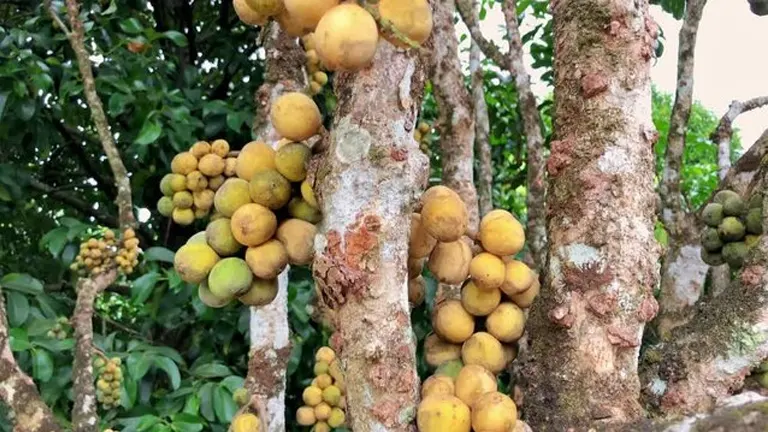
- Soil: This tree prefers deep, loamy soil that is rich in organic matter with good drainage. Acidic to slightly alkaline soils are ideal.
- Watering: Regular watering is essential, especially in the tree’s early years. A mature tree requires moisture, particularly during the fruiting season.
- Sunlight: Lanzones trees thrive in partial to full sunlight, though young saplings benefit from partial shade.
- Propagation: Most commonly grown from seeds, but can also be propagated via cuttings or grafting for better yields.
- Maintenance: Regular pruning helps maintain its shape and health, and periodic fertilization supports robust growth. Keep an eye out for pests like the mealybug, which can affect fruit quality, and take preventive steps to protect the tree from disease.
Ecological Benefits of Philippine Lanzones Tree
The Philippine Lanzones Tree offers several ecological benefits, including:
- Soil Improvement: By shedding organic material, the tree enhances soil quality, contributing to nutrient cycling and improved soil fertility.
- Erosion Prevention: Its roots stabilize the soil, making it an excellent choice for regions prone to erosion.
- Wildlife Support: Lanzones trees provide food and shelter for many animals, fostering a habitat that benefits local biodiversity.
Philippine Lanzones Tree Flowering and Pollination
The tree blooms in small, inconspicuous greenish-yellow flowers, which emit a subtle scent to attract pollinators. Flowering usually occurs in the warm months, followed by fruiting about four to six months later. Bees are the primary pollinators, drawn to the flowers’ nectar. This pollination process ensures the development of healthy fruits, which support a range of wildlife species, from birds to insects.
Is Philippine Lanzones Tree Drought-Tolerant?
While the Philippine Lanzones Tree is not especially drought-tolerant, it has a moderate ability to withstand short dry spells. Extended droughts can reduce its fruiting potential, so it thrives best in consistently moist environments. Gardeners in drier regions should consider supplemental watering during prolonged dry periods.
Philippine Lanzones Tree and Wildlife Interactions
The Philippine Lanzones Tree is vital to its ecosystem, with many animals relying on it for sustenance. The fruit is enjoyed by birds, bats, and other small mammals, which also help disperse the seeds, facilitating the spread of the tree in tropical forests. This mutualistic relationship enhances local biodiversity and strengthens forest ecosystems.
Conclusions
The Philippine Lanzones Tree (Lansium domesticum) is a species of immense ecological, agricultural, and cultural value. It enriches soil, stabilizes landscapes, supports wildlife, and offers nutritious fruits cherished by local communities. With its wide-ranging ecological benefits, the Philippine Lanzones Tree remains a critical species for biodiversity, making it essential to protect and cultivate this tree for future generations.
Frequently Asked Questions (FAQs)
- What is the Philippine Lanzones Tree?
The Philippine Lanzones Tree, scientifically known as Lansium domesticum, is a tropical fruit tree that produces small, round fruits with sweet, translucent pulp. It’s native to Southeast Asia and valued for its ecological and agricultural benefits. - Where does the Philippine Lanzones Tree grow?
This tree thrives in warm, tropical regions with high humidity, such as the Philippines, Malaysia, and Indonesia, especially in areas with well-distributed rainfall and loamy soil. - What are the main characteristics of the Lanzones Tree?
It is a medium-sized tree with glossy leaves, rough bark, and clusters of greenish-yellow flowers. The tree’s round, pale yellow fruits are sweet and nutritious. - How does the Lanzones Tree benefit the ecosystem?
It improves soil fertility, prevents erosion with its strong root system, and provides food and shelter for local wildlife, making it important for forest ecosystems. - How long does a Philippine Lanzones Tree live?
Mature Lanzones trees can live for several decades, with optimal fruiting typically occurring around 10–15 years after planting. - Is the Lanzones Tree drought-tolerant?
While it has some resilience to short dry spells, it prefers consistently moist environments and performs best with regular watering, especially in fruiting seasons. - What wildlife depends on the Lanzones Tree?
Birds, bats, and small mammals consume its fruits, aiding in seed dispersal, while bees pollinate its flowers, supporting the local biodiversity. - How do you grow and care for a Lanzones Tree?
Plant it in loamy, well-drained soil with partial to full sunlight. Regular watering, pruning, and pest management will ensure its health, while propagation can be done through seeds or cuttings.
We hope this guide has highlighted the importance of the Philippine Lanzones Tree in both ecology and culture. Have experiences with growing lanzones or ideas for its conservation? Join the conversation below and inspire others! Share this guide to help promote sustainable ecosystems and preserve our natural heritage.


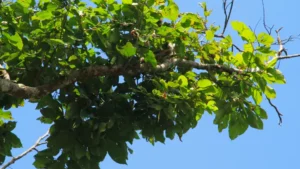
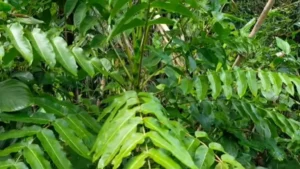

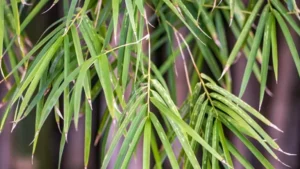

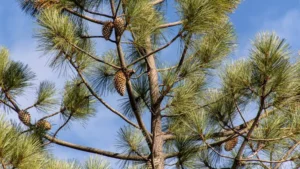


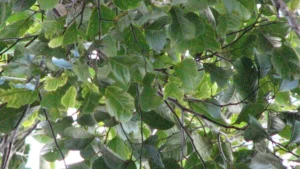

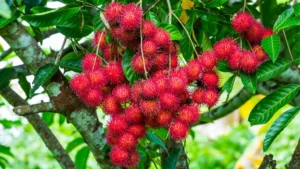
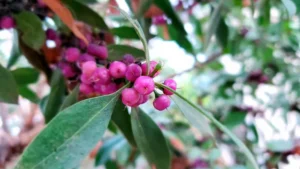
Leave your comment